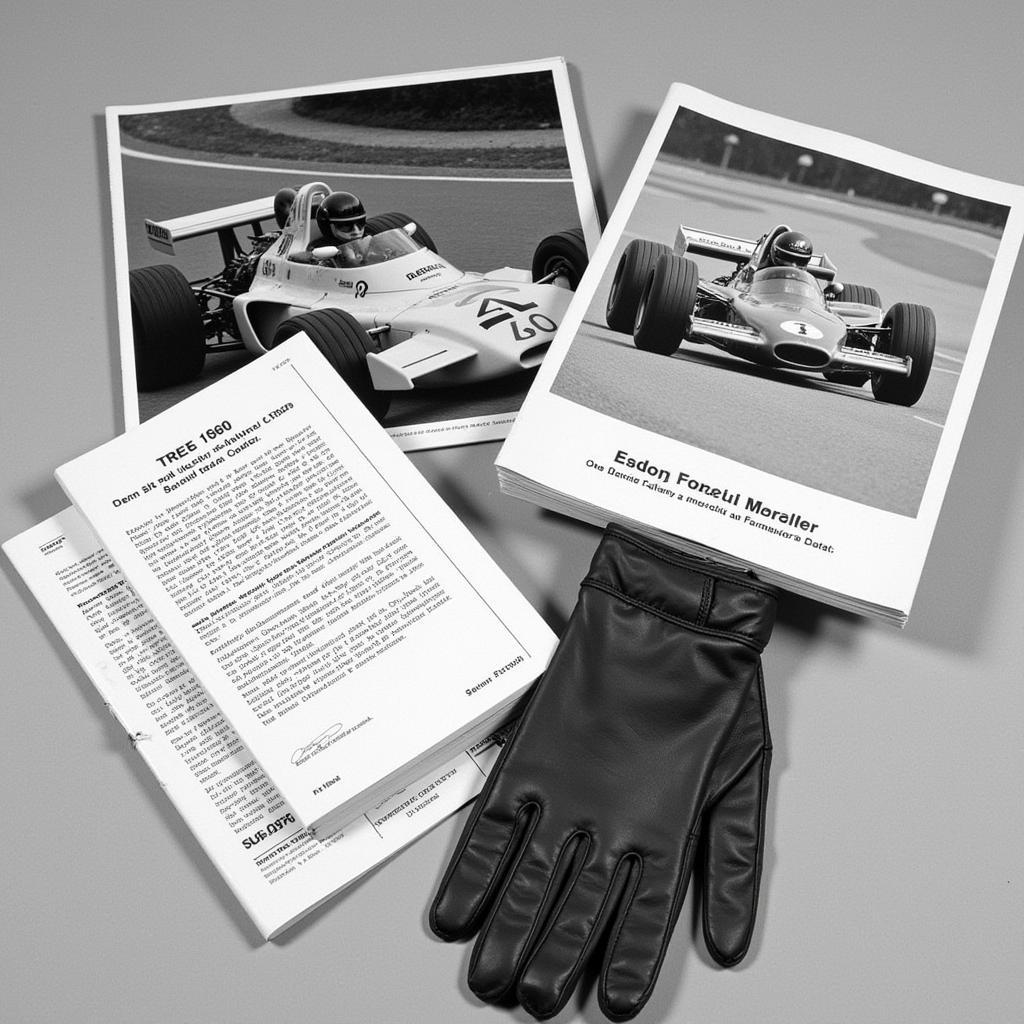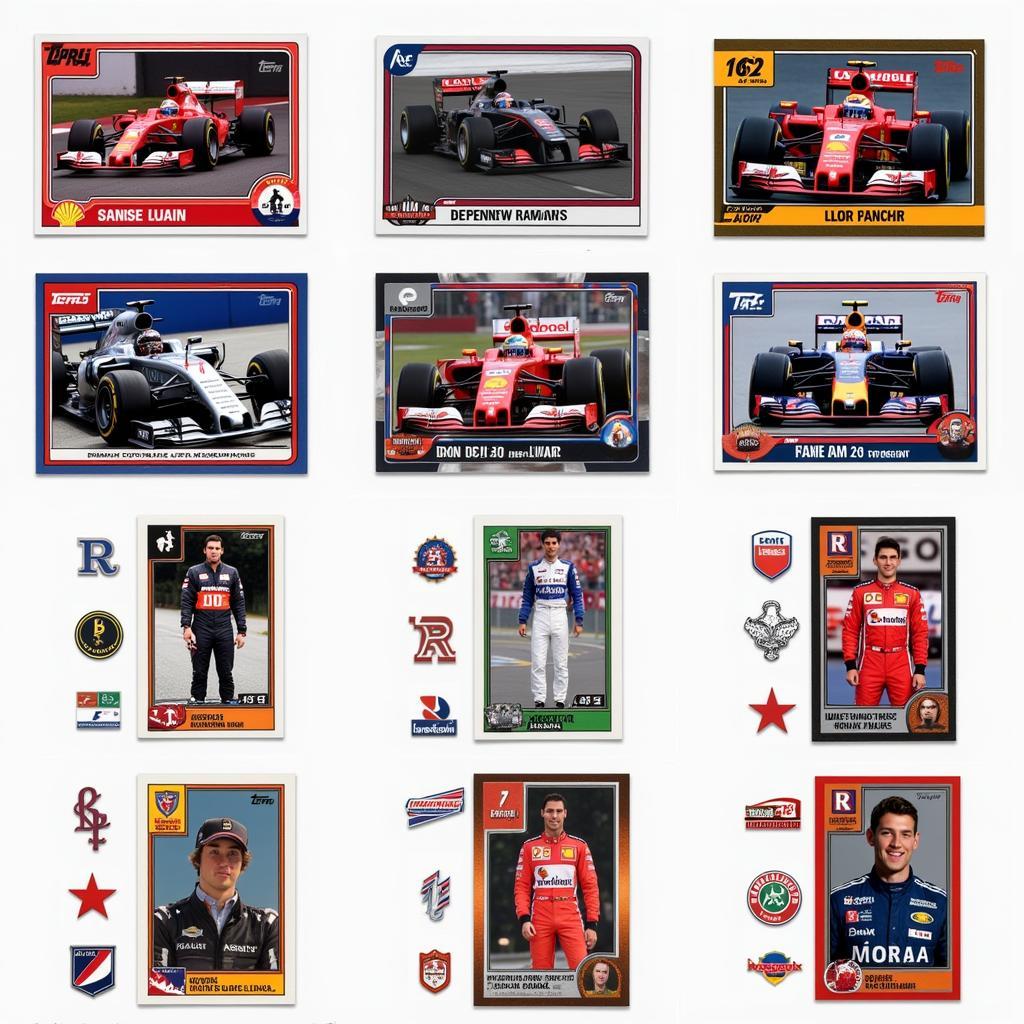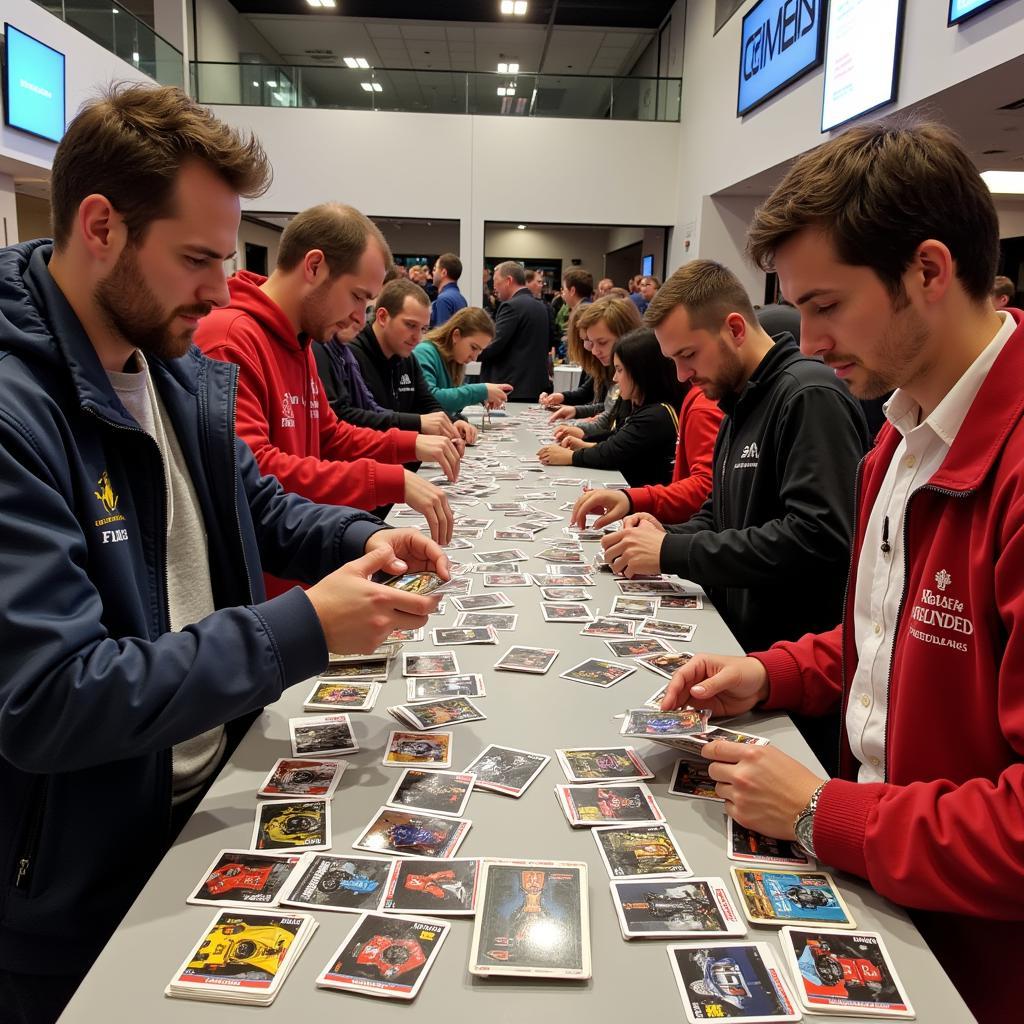Formula 1 Driver Cards have become a popular collectible for motorsport enthusiasts worldwide, offering a tangible way to connect with the sport and its stars. Whether you’re a seasoned collector or just starting out, this comprehensive guide will delve into everything you need to know about Formula 1 driver cards, from their history and value to tips on collecting, trading, and showcasing your prized possessions.
A History of Formula 1 Collectibles: More Than Just Cards
While trading cards dedicated solely to Formula 1 drivers emerged in the late 20th century, the world of F1 collectibles has a richer history. Early enthusiasts sought out signed photographs, programs from iconic races, and even pieces of racing memorabilia like gloves or helmets. The advent of trading cards provided a more accessible and affordable entry point for fans, quickly evolving into a dedicated hobby.
 Vintage Formula 1 memorabilia
Vintage Formula 1 memorabilia
Understanding Formula 1 Driver Cards
Formula 1 driver cards typically feature a portrait of the driver on the front, along with their name, team, and the year. The back of the card often provides key statistics, career highlights, or biographical information. These cards are produced by various manufacturers, each with its unique design, format, and level of rarity.
Popular Formula 1 Driver Card Manufacturers
Today, several major players dominate the market for F1 driver cards:
- Topps: Known for their extensive collection of sports cards, Topps offers a dedicated Formula 1 line featuring a wide range of drivers, teams, and special editions.
- Panini: Another prominent name in the world of trading cards, Panini boasts high-quality F1 cards with stunning photography and limited-edition variations.
- F1 Authentics: The official memorabilia arm of Formula 1, F1 Authentics offers premium cards often signed by the drivers themselves, making them highly sought after by collectors.
 Examples of F1 driver cards from different manufacturers
Examples of F1 driver cards from different manufacturers
Factors Influencing Formula 1 Driver Card Value
Several factors contribute to the value of Formula 1 driver cards:
- Rarity: Limited-edition cards, special sets, or cards with printing errors are highly sought after and command a premium price.
- Condition: Like any collectible, the condition of the card significantly impacts its value. Cards in pristine condition, free from scratches, creases, or fading, are highly desirable.
- Driver Popularity: Cards featuring legendary drivers like Michael Schumacher, Ayrton Senna, or Lewis Hamilton often hold significant value, particularly those from early career years or significant races.
- Historical Significance: Cards from iconic seasons, championship wins, or commemorating special events in F1 history can also increase in value over time.
Building Your Formula 1 Driver Card Collection
Whether you’re a casual collector or aiming for a complete set, several strategies can help you build a valuable and rewarding collection:
- Set a Budget: Determine how much you’re willing to spend on cards, especially if you’re targeting rare or valuable items.
- Focus Your Interests: Consider focusing on a specific driver, team, era, or type of card to create a cohesive and meaningful collection.
- Research and Learn: Familiarize yourself with different card manufacturers, sets, rarity levels, and grading standards to make informed purchasing decisions.
- Connect with Other Collectors: Join online forums, social media groups, or attend trading card shows to connect with fellow enthusiasts, trade cards, and gain valuable insights.
Trading and Selling Formula 1 Driver Cards
As your collection grows, you might consider trading or selling some of your cards:
- Online Marketplaces: Platforms like eBay, dedicated trading card websites, and social media groups offer avenues to connect with potential buyers and sellers.
- Trading Card Shows: Attend local or national trading card shows to meet other collectors face-to-face, assess card values, and negotiate trades.
- Auction Houses: For rare or highly valuable cards, consider consigning them to reputable auction houses specializing in sports memorabilia.
 Collectors trading Formula 1 driver cards
Collectors trading Formula 1 driver cards
Showcasing and Protecting Your Collection
Once you’ve amassed a prized collection of Formula 1 driver cards, it’s essential to store and display them properly to preserve their condition:
- Protective Sleeves: Use individual card sleeves made from acid-free materials to prevent scratches, dust, and fingerprints.
- Top Loaders or Card Savers: For added protection, place sleeved cards in rigid top loaders or card savers, especially for valuable or rare items.
- Display Cases: Showcase your favorite cards in dedicated display cases designed for trading cards, protecting them from UV damage and dust while allowing for easy viewing.
- Storage Binders: Organize and store your entire collection in high-quality storage binders with acid-free pages to prevent yellowing or deterioration over time.
Conclusion
Collecting Formula 1 driver cards offers a rewarding way to connect with the sport’s rich history, celebrate its iconic drivers, and build a tangible link to your passion. By understanding the factors influencing card values, exploring different collecting strategies, and prioritizing proper storage and display techniques, you can cultivate a collection that brings you years of enjoyment and potential investment value. Remember, the most important aspect of collecting is to have fun and pursue your passion for Formula 1.





